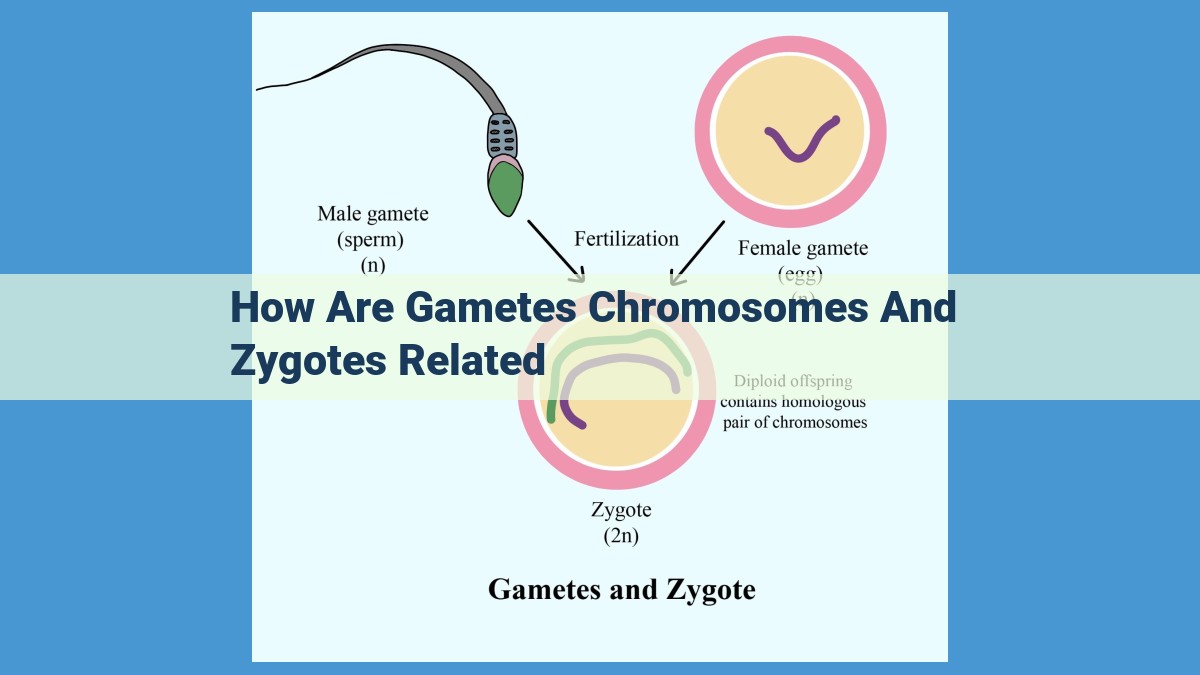Gametes, chromosomes, and zygotes form an intricate genetic tapestry. Gametes (eggs and sperm) are haploid cells with half the number of chromosomes as diploid zygotes, which are formed by the union of two gametes. Zygotes inherit half their chromosomes from each gamete, creating a unique genetic combination. Chromosomes, carriers of DNA, house genes (units of heredity) and alleles (alternative forms of genes). During meiosis (gamete formation), homologous chromosomes exchange genetic material, fostering genetic diversity.
Haploid vs. Diploid: The Foundation of Genetic Diversity
In the realm of genetics, cells come in two distinct varieties: haploid and diploid. This fundamental distinction plays a pivotal role in the creation of genetic diversity and the inheritance of traits.
Haploid cells are the gatekeepers of genetic information in the form of gametes. These highly specialized cells, including eggs and sperm, contain half the usual complement of chromosomes. This reduced number is essential for the preservation of genetic variation during fertilization.
The process of meiosis is the master orchestrator of this chromosomal reduction. Meiosis involves a series of intricate cellular divisions that halve the chromosome number from diploid to haploid. This process ensures that when two haploid gametes unite during fertilization, the resulting zygote inherits the optimal number of chromosomes, one set from each parent.
Gametes: The Genetic Gatekeepers of Diversity
In the intricate tapestry of life, gametes, the reproductive cells, play a pivotal role as the gatekeepers of genetic diversity. These specialized cells, haploid in nature, hold the key to creating unique individuals and perpetuating the existence of species.
Meiosis: The Dance of Genetic Variation
From the depths of diploid cells, meiosis emerges as the conductor of genetic diversity. This intricate process orchestrates the halving of chromosome number, from diploid to haploid. Through a series of choreographed steps, homologous chromosomes align, exchange genetic material, and ultimately give rise to four haploid gametes.
Genetic Recombination: A Symphony of Possibilities
Within the meiotic dance, genetic recombination unfolds as a master virtuoso. Homologous chromosomes embrace and exchange segments of DNA, creating a kaleidoscope of genetic possibilities. Each gamete receives a unique combination of chromosomes, resulting in an unprecedented repertoire of genetic variations.
Importance of Genetic Diversity
The kaleidoscopic array of gametes ensures diversity within a species. This genetic heterogeneity is the bedrock of adaptation and evolution. It allows organisms to respond to changing environmental conditions, promotes resistance to diseases, and enhances the survival of populations in the face of adversity.
Gametes stand as the gatekeepers of genetic diversity, shaping the tapestry of life. Through the meticulous dance of meiosis and the transformative power of genetic recombination, they create a symphony of possibilities. This symphony ensures the resilience, adaptability, and enduring existence of the living world.
The Zygote: A New Beginning in the Symphony of Life
In the intimate dance of reproduction, two gametes, each carrying half the genetic blueprint of an individual, unite to create a new entity: the zygote. This microscopic marvel, the starting point of a new life, holds within it the promise of a unique and extraordinary journey.
The zygote inherits its genetic heritage from its parents, receiving half of its chromosomes from each gamete. These chromosomes, the repositories of our genetic information, carry the instructions for our physical and physiological traits. As the zygote begins its transformation into an organism, it bears the imprint of both its maternal and paternal lineages.
The zygote’s destiny as a new organism unfolds as it undergoes a series of intricate divisions. These divisions not only increase its cell number but also duplicate its chromosomes, ensuring that each new cell receives a complete genetic endowment. With each division, the zygote grows in complexity, preparing for the remarkable journey that lies ahead.
As the zygote matures, it differentiates into a variety of specialized cells, each playing a unique role in the development and function of the new organism. From the beating heart to the intricate tapestry of the brain, the zygote’s potential is boundless.
The formation of the zygote marks a pivotal moment in the cycle of life. It is the bridge between two generations, carrying forward the genetic legacy of the past and holding the promise of a vibrant future. In its tiny, unassuming form, the zygote embodies the infinite possibilities that lie ahead in the realm of life’s grand symphony.
Chromosomes, Genes, and Alleles: The Building Blocks of Heredity
In the fascinating world of genetics, chromosomes reign supreme as the custodians of our genetic blueprint. These microscopic structures, found within the nucleus of every cell, carry the DNA that determines our physical and biochemical traits. Each chromosome contains numerous genes, which are the fundamental units responsible for specific inherited characteristics.
Genes are like tiny instruction manuals, coding for proteins that orchestrate a myriad of cellular functions. Alleles are different versions of a gene that can exist at a particular locus (location) on a chromosome. Variation in alleles contributes to the genetic diversity that makes each individual unique.
During meiosis, a specialized cell division that creates gametes (eggs and sperm), homologous chromosomes (pairs of identical chromosomes) align and exchange genetic material through a process called crossing over. This genetic reshuffling shuffles alleles and creates gametes with unique combinations of chromosomal DNA.
Upon fertilization, when an egg and sperm unite, their chromosomes combine to form a zygote, the fertilized egg that marks the beginning of a new life. The zygote inherits half of its chromosomes from each parent, inheriting a random assortment of alleles that shape its genetic endowment.
